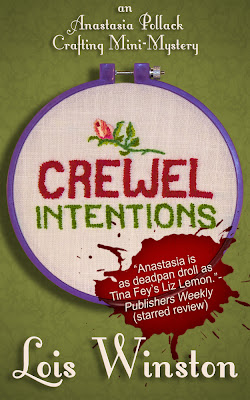 |
| Singer Model 27 Treadle Table, Singer Manufacturing Co. |
As
a very young child, I used to take my dolls for seesaw rides, not on the
playground but on a movable metal grate attached to a cabinet in the second
floor hallway of my grandmother’s home. Years later, I learned that my
makeshift seesaw was my great-grandmother’s Singer treadle sewing machine.
I
have a feeling I used the machine more than she ever did. Great-grandmother
preferred doing things the old fashioned way -- by hand. And grandmother owned
an electric version. I can imagine
the circumstances by which great-grandmother came to own her machine, though. Like many families in the late 1800’s,
mine probably bought their machine from Mr. Singer by paying five dollars down,
half an average weekly salary in those days, and three to five dollars a month
thereafter until the principal and interest were paid off.
The
sewing machine was the first machine to enter the American home and was seen as
somewhat of a miracle when first introduced. An 1860 issue of Scientific
American called it the most important invention to the world after the
spinning Jenny and the plough. Godey’s Lady’s Book dubbed it “The Queen
of Inventions.” The sewing machine reduced the time it took to make an average
shirt from ten to fourteen hours down to a little more than an hour.
Early
machines were expensive, though, and even with payment plans the price was out
of reach for many households. For this reason, communities and organizations
often pooled their money to purchase a single machine for communal use. As sewing machine production and sales
increased, the price dropped, and more families were able to afford a sewing
machine of their own. By 1905 the electric powered machine was in wide use, and
by 1910 there was a sewing machine in most working class homes.
The
sewing machine was seen as a mixed blessing, though, reflecting both the
advantages and social problems of the Industrial Revolution. The advent of the
sewing machine moved garment work from cottage industries into factories. By
1862, three out of four sewing machines were bought for use in factories. Because
production increased, prices fell, and clothing became more affordable. However,
factory workers often found themselves laboring under harsh conditions in what
became known as sweat shops. Many others lost their jobs. The social upheaval
created by the introduction of the sewing machine fomented unrest which
eventually led to the advent of workers’ unions and the establishment of
government standards in the work place.
Most
school text books credit Elias Howe, Jr. with the invention of the sewing
machine. However, many
individuals, going back to Thomas Saint in 1790, contributed to its
development. Earlier inventions had many design flaws and were never put to
practical use until French tailor Barthelemy Thimmonier produced a workable
machine in 1829. By 1841 eighty Thimmonier machines were producing uniforms for
the French army until an angry mob of tailors, fearing the loss of their
livelihood, broke into his factory and destroyed his machines. Thimmonier died
penniless.
At
about the same time American Walter Hunt developed a practical machine but
abandoned production, fearing his invention would put seamstresses out of work.
Howe, who was issued a patent in 1846, found little market for his machine. In
1850 Isaac Merrit Singer developed the first practical sewing machine. Previous
machines employed a hand crank to power the needle. Singer developed a treadle
mechanism to replace the hand crank.
Howe
wound up suing Singer and others for copyright infringement. A compromise was
reached whereby Howe received royalties. Singer went on to become the world’s
largest manufacturer of sewing machines at the time. He was awarded twenty
additional patents. In addition to establishing the installment plan for
purchasing his machines, he implemented a company-wide policy of destroying
trade-in machines to reduce the second-hand market. By 1876 Singer was selling
twice as many sewing machines as his nearest competitor. By 1890 Singer had
produced nine million sewing machines.
To
date, over 46,000 sewing machine patents have been awarded, including one to
Helen Augusta Blanchard of Portland, Maine in 1873 for inventing the zig-zag
stitch. Today there are more than 4,000 different types of sewing machines
manufactured.
I
have no idea what happened to my great-grandmother’s treadle machine. My
grandmother sold her house and moved into an apartment when I was in my
mid-teens. The treadle didn’t make the move with her. But I never forgot the
joy of crawling under that cabinet and taking my dolls for a ride.
Years
ago, I happened upon a yard sale. There on the lawn sat a Standard treadle
machine. “How much?” I asked the owner. “You can have it for fifteen dollars,”
he replied. Although I prefer to sew on my ultra-modern machine, for over
thirty years that old treadle machine has had a place of honor in my home.
Post a comment for a chance to win a book from our Book Club Friday guest author. -- AP
















